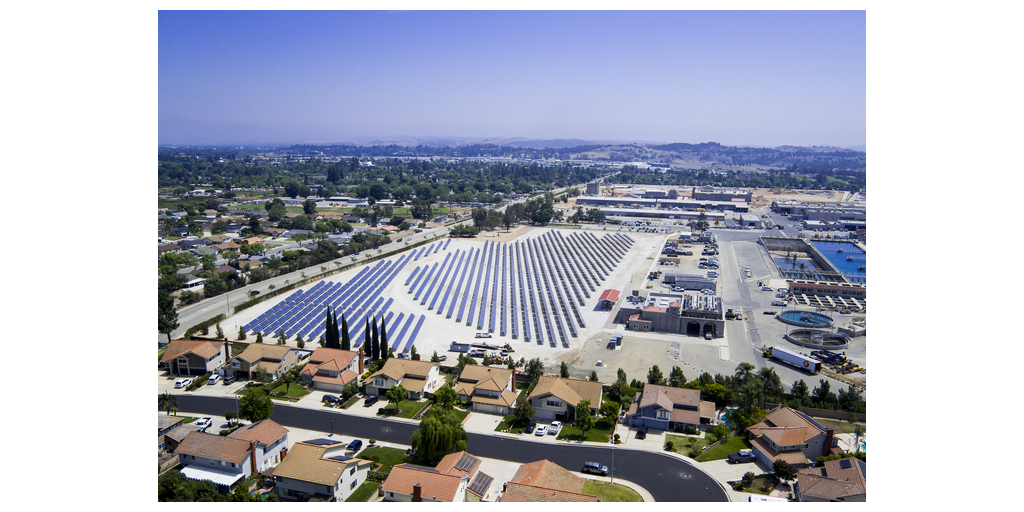Sign up for daily news updates from CleanTechnica on email. Or follow us on Google News!
When technological innovation threatens to dissolve what had seemed a lifelong norm, the next step is generally denial. Yup, there’s confusion, distrust, and anger when the familiar is withdrawn from everyday life. This is the phenomenon we’re seeing with the transition to battery-powered transportation.
People at the highest echelons of fossil fuel power want to maintain their control over the transportation industry, and, in order to slow or even stop the change that will reduce their potent influence, they work to refute climate crisis arguments. They try to convince others that the shift to battery-powered transition is harmful — even though it’s common knowledge that fossil fuels cause pollution at every stage of their lifecycle: from drilling to transport to refining to burning in an engine.
Why is the EV vernacular filled with false assertions veiled as truths? It’s because out-and-out lies are the byproduct of an agenda that preserves the fossil-fueled status quo and enhances profitability for its sycophants. False narratives dismiss the climate crisis, uplift proclamations from Big Oil and Gas, and allow majors and their subsidiaries to profit and maintain dominance. Highly financed social media algorithmic repetition spreads EV untruths, even as the mass ramp-up to EV adoption is taking place.
It’s time to deconstruct some of the myths, misstatements, and misinformation surrounding EVs. We’ll break it into 3 parts, with each part leading to more blatant and ridiculous arguments against EVs.
3 Myths about Battery-Powered Transportation
A myth is a kind of symbolic, even magical narrative, drawn from an unknown source but partially based in time-honored traditions. In the case of myths about EVs, their origin likely relate to actual early events that occurred as the first all-electric models came onto the scene. Because every myth presents itself as an authoritative, factual account, today’s EV mythology may have at their roots actual if optimistic early EV experiences. Nonetheless, by presenting itself as a fait du compli, myths about EVs do a disservice to a whole segment of auto consumers who fail to question or distinguish between myths and stories that are merely untrue. Yet, because they may have been based on a fact — albeit outdated — EV myths are the least harmful of all the myths, misstatements, and misinformation.
10. EVs are slow as golf carts. Well, there are some slow electric golf carts (I own one). There are also some electric low-speed vehicles (LSVs) which are street-legal. These 4-wheeled vehicles have a top speed of about 25 mph and a gross vehicle weight rating of less than 3,000 lbs. Most US states allow LSVs to drive on roads marked 35 mph or less. Low-speed vehicles are typically electric and must adhere to federal performance and safety standards. But LSVs are not indicative of most EVs on major roads today. EVs have powertrains that deliver torque from a standstill. Today’s production EVs are beginning to challenge or even beat traditional combustion-powered performance cars. KBB says EVs are “monstrously impressive when it comes to acceleration.”
9. EVs only come as sedans. Electric mobility includes light-duty automobiles, medium- and heavy-duty electric vehicles, electric micromobility devices, and transit vehicles. The EV market is evolving rapidly, with models available in a range of vehicle types, from compact cars and sedans to sport utility vehicles (SUVs) and pickup trucks. Many automakers have detailed plans to electrify large portions of their fleets over the next decade, with some announcing goals for fully electrified lineups within 5 years. Dozens of pure battery electric vehicles (BEVs) are set to debut by the end of 2024, and an increasing number of SUVs and pickups are scheduled.
8. Driving an EV doesn’t save money. Once upon a time, only premier, high-end EVs were available for purchase. Those price tags left out most middle class folks. Nowadays, however, the interplay of more affordable purchase prices, an advanced fuel economy, reduced maintenance costs, and governmental stimulus packages can reduce an EV driver’s overall auto expenses.
3 Misstatements about Battery-Powered Transportation
A misstatement is an utterance that is false at worse or inaccurate at best. It may or may not be intentional. In the case of battery-powered transportation, misstatements occur when individuals draw upon prior knowledge and apply it — incorrectly — to current circumstances. Misstatements that have been caused intentionally can be unpacked due to the speaker’s underlying rationale and concurrent actions. Called “fraud” in the business world, misstatements about battery-powered transportation don’t generally carry enough weight to impact important EV buying decisions if consumers do their due diligence.
7. EVs cost a lot to maintain. Vehicles that have high maintenance costs have lots of moving parts. ICE vehicles have thousands more moving parts than EVs, which have a simple one-speed transmission and don’t require oil changes, tune-ups, or spark plugs. This misstatement leads consumer to believe that driving an EV won’t save on operating costs, based on current gas prices, which is misplaced.
6. There is nowhere to charge an EV. Most EV drivers charge at home and seek out public chargers for longer trips. The good news is that charging stations continue to get installed every day, and the market is responding and will continue to respond. Charging times are a bit longer with a fast charger than the time it takes to fill up a tank of gas, but a 15 or so minute stopover is good for the mind and body, anyway, when you’re putting on lots of miles.
5. EV batteries need replacing every 5 years. Most EV batteries have warranties of around 5 to 8 years but are expected to last much longer, with lifespans continually improving. The misstatement often continues on that we’ll end up with lots of EV batteries going into landfills. Actually, when your EV battery does reach the end of its life, it can be repurposed and re-used in a second life – in renewable energy storage, for example — in the same way that lead-acid car batteries are starting to be recycled.
4 Blatant Misinformation Items that Seek to Devalue Battery-Powered Transportation
Researchers, scientists, and environmental public interest groups support accelerated EV adoption because the science is clear that EVs are much cleaner than conventional vehicles. Fossil fuel gazillionaires like the Koch brothers want to limit the EPA’s moves and spread a lot of misinformation about EVs. Climate entrepreneurs promote conflict around fossil fuel-driven pollution, and they do so for profit. They make a living from stirring up controversy about a zero emissions future for the Earth, with continued and coordinated efforts through op-eds and paid posts that mirror and perpetuate EV misinformation.
4. EVs are worse for the climate than ICE cars because of battery manufacturing. Actually, according to the US EPA, the GHG emissions associated with an EV over its lifetime are typically lower than those from an average ICE vehicle, even when accounting for manufacturing. Electric motors convert 75% of the chemical energy from the batteries to power the wheels. By comparison, ICEs only convert 20% of the energy stored in gasoline. What’s more, EVs emit no direct tailpipe pollutants and are generally responsible for less pollution than conventional vehicles in every region of the US.
3. EVs don’t go far enough on a single charge and have a short range. The US Department of Transportation reports that the average American drives 40 miles per day. Most EVs provide ample driving range to handle the daily commute and much more. Certainly, some environmental factors reduce range: 1) increase in elevation, 2) headwind, 3) cold temperature, 4) snow and or slush on the road; 5) reduced aerodynamic efficiency; 6) additional weight; 7) roof rack; 8) bike rack; 9) trailer. Yet most of those apply to distance one can drive in an ICE vehicle, too.
2. The increase in electric vehicles entering the market will collapse the US power grid. The US electric grid is fragmented, as it was largely built to accommodate coal and gas plants. It is a major obstacle in and of itself to efforts to fight the climate crisis — so don’t blame EVs. What people guffawing about the danger EVs pose to the grid fail to understand is that EVs can charge whenever the time is right. Every EV sold in the US allows owners to schedule when charging begins and ends, so just because a car is plugged in does not mean it is drawing power from the grid.
1. EVs are unsafe. We will soon release a report at CleanTechnica called The EV Safety Advantage. Misinformation about EV safety is likely the most harmful myth, misstatement, or misinformation item, as it inhibits consumers who might otherwise make the move to EVs. It’s true that the earliest versions of EVs weren’t tested by the NHTSA and IIHS because they were considered low-volume models, but with volume that’s changed. Several EV models have received 5 star ratings from the NHTSA. The criticism about EV batteries catching fire or exploding, moreover, has been proven to be less likely in EVs than in ICE vehicles. US auto safety regulators started asking questions about battery risks after a Chevrolet Volt plug-in hybrid burst into flames while parked at a NHTSA testing center. NHTSA closed its investigation months later, with determinations that EVs pose no more fire risk than other cars. GM was left to salvage the Volt’s reputation afterward.
Have a tip for CleanTechnica? Want to advertise? Want to suggest a guest for our CleanTech Talk podcast? Contact us here.
EV Obsession Daily!
I don’t like paywalls. You don’t like paywalls. Who likes paywalls? Here at CleanTechnica, we implemented a limited paywall for a while, but it always felt wrong — and it was always tough to decide what we should put behind there. In theory, your most exclusive and best content goes behind a paywall. But then fewer people read it!! So, we’ve decided to completely nix paywalls here at CleanTechnica. But…
Thank you!
Tesla Sales in 2023, 2024, and 2030
CleanTechnica uses affiliate links. See our policy here.




